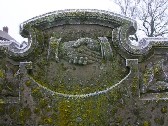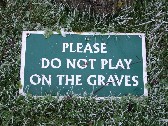| |
|
 |
|
I had been cycling around
the hills north of Framlingham. It was
January 2009, the coldest month in years.
In the early afternoon, a man in a garden
near here told me that the temperature
was minus three, but it felt much colder.
My heart had been warmed by the beautiful
and welcoming medieval parish church at
Bruisyard, across the hills, but
Cransford parish church appeared to have
been abandoned. The church was locked,
the only locked parish church for miles,
and there was no keyholder notice, no
notices at all, no sign of life. Heading
out of the village in the direction of
Great Glemham, however, I passed this
fine modern building, with obvious signs
of a busy life, and I knew that Cransford
did have a spiritual heart after all.
|
It
is on the site of the original Cransford Baptist
Chapel, which had been erected in 1841. The
community moved here from Hacheston. John
Baldwin, the Minister, lived at Bruisyard, and
claimed an average attendance of 150 at the time
of the 1851 Census of Religious Worship. This
seems a lot from a parish of barely 300 people,
but presumably Baptists came here from Bruisyard
as well.
George
Pooley, the Rector of the local Anglican parish
church, claimed between 50 and 100 attenders
there, but he was also Perpetual Curate of
Bruisyard, and alternated his morning services
between the two parish churches. Probably, there
were those who attended both churches, and more
who attended the church in the morning and the
chapel in the afternoon, but it is usual to find
Baptist chapels with larger attendances than the
local Anglican parish church in the middle years
of the 19th Century in Suffolk.
| Cransford Baptist Chapel was
one of several Suffolk non-conformist
churches destroyed by the Great Storm of
1987. As in most cases, the replacement
building was a great improvement in terms
of facilities and suitability for modern
worship - it is an ill wind indeed which
blows nobody any good. The new building
is now rebadged as Cransford Christian
Fellowship, the name and large car park
reflecting the fact that the Baptist
tradition is one of gathered communities.
Loads seems to be going on here, judging
by the notice board and the church
website. But there is local
traditon here as well, because the new
building retains the old graveyard, which
is beautifully maintained behind the new
church. A sign on the grass asks children
Please do not play on the graves
- whether out of respect or in fear of
litigation, I couldn't say. But I liked
the sense of a community mindful of its
past, and purposeful in the present.
|
|
 |
|
|
|

